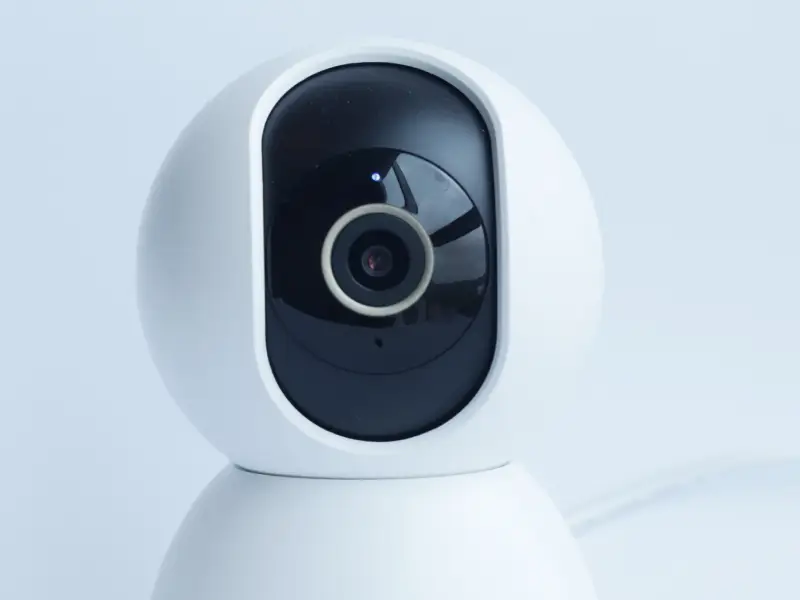Development of Virtual Web Cameras and Virtual Audio Devices
Improve your apps with virtual web camera and audio devices
Industry
Productivity, Telecom, Utilities, Audio/Video
Operating System Type
macOS, Windows
Technologies
Swift, SwiftUI, Obj-C, C++, QT/QML, ElectronJS

Usage cases
Applications and Importance
Virtual cameras and audio devices are software-based tools that appear on your computer as accessible devices. Applications installed on your Mac or PC, such as Zoom, Skype, Google Meet, and Microsoft Teams, can utilize these virtual devices.

- Applying various filters in real-time, similar to the SnapCam app.
- Automatically focusing on specific objects or people in a video, including zoom capabilities.
- Playing pre-recorded videos and adding picture-in-picture effects.
- Mixing multiple video streams from a real camera with presentations, notifications, and countdown timers.
- Enhancing videos with background music, sound effects, and audio reactions.
- Filtering out specific noises or predefined sounds, akin to the Krisp app.
- Displaying remote cameras, sharing screens, or streaming ipcam feeds as camera video.
- Streaming video output to desktop applications.

- Audio processing and mixing with pre-recorded sounds.
- Applying real-time audio effects.
- Filtering specific sounds or noises, similar to Krisp-like applications.
- Recording audio output on macOS, which is only possible with a virtual audio device.
- Creating virtual audio cables for connecting specific sources and outputs.
- Streaming audio output to desktop applications.

Challenges in Virtual Device Development

- Automatically controlling the default system audio to switch between the real and virtual devices seamlessly.
- Handling intermediate devices in the audio chain, such as setting appropriate volume levels and syncing audio when switching sources.
- Adapting to spontaneous changes in Bluetooth audio stream sample rates.
- Adjusting video sizes, scaling, and cropping to match various input and output formats.
- Accommodating a range of supported camera resolutions, such as the 14 different modes of the MacBook Pro M1 camera.
- Managing color mode conversions, including UYVY, YUY2, NV12, and BGRA.
- Synchronizing multiple video streams with the virtual camera output.
- Optimizing performance for processing high-resolution streams in real-time.

Our test labs include a variety of internal and external cameras, as well as a wide range of Intel/ARM Macs and PCs, to ensure compatibility and performance across multiple devices and operating system versions.

While open-source solutions like the OBS camera project or BlackHole virtual audio device exist, they often provide only the basic driver code. Our team's experience shows that additional work is needed to address real-world deployment issues.

Implementation tricks for macOS and Windows

Swift/Objective-C

C++/QT/JUCE

JavaScript
Virtual Camera Project for macOS
This project encompasses two components: a driver and a video stream service. macOS virtual cameras can be developed using:
- CoreMedia extension
- DAL plugin
CoreMedia I/O extension is compatible with macOS 12.3 and onwards. DAL, functioning on all macOS versions until the end of 2023, is gradually being phased out by Apple. Popular virtual cameras like OBS and SnapChat currently utilize DAL.
CoreMedia extension integrates within your main application, allowing direct data transfer to the camera. Conversely, DAL, an external plugin, necessitates a communication link with your service, using pipes or sockets. These applications should be well-installed, code-signed, and notarized. CoreMedia typically employs Swift, while DAL favors C/C++.
Virtual Camera for Windows
Windows virtual cameras are crafted using the DirectShow plugin, requiring an additional service for data feeding via sockets or pipes. DirectShow drivers must be code-signed with a Kernel mode certificate and approved by Microsoft for wider distribution. For testing, Windows PCs need to be in test mode for unapproved kernel driver installation.
Our team has an implementation of these projects integrated with apps based on C++/QT, Swift, C#, and ElectronJS.

We are experts who have developed 11 similar apps during 2021-2023.

macOS

Cross-platform

Windows
Our initial virtual audio and video device project took 8 months to develop a cross-platform version, deploy, and fix real-life usage issues. However, subsequent projects have seen significantly reduced development times.
Currently, a proof of concept can be developed in 4-5 weeks by a single developer, with 8-12 weeks needed for a production-ready platform. Timelines may vary based on additional features and requirements.
For a streamlined development process and high-quality, bug-free solutions, feel free to contact us. Our experts specialize in reducing development time and costs while delivering top-tier results.
Client’s feedback

"VEProf team are professional in both development work and communication. They clearly understand the goal, communicate the challenges/findings timely, provide expertise advices and deliver satisfying result on time. We truly enjoy working with team, and would highly recommend!", James L.


"It was a great experience working with the team.", Jay B.


"The project was delivered in a timely manner within the expected parameters of the contract. The VEProf team has considerable experience with MacOS and its audio subsystem, as well as integrating Chromium into apps.", Patrick B.

Let's make technology work towards your success